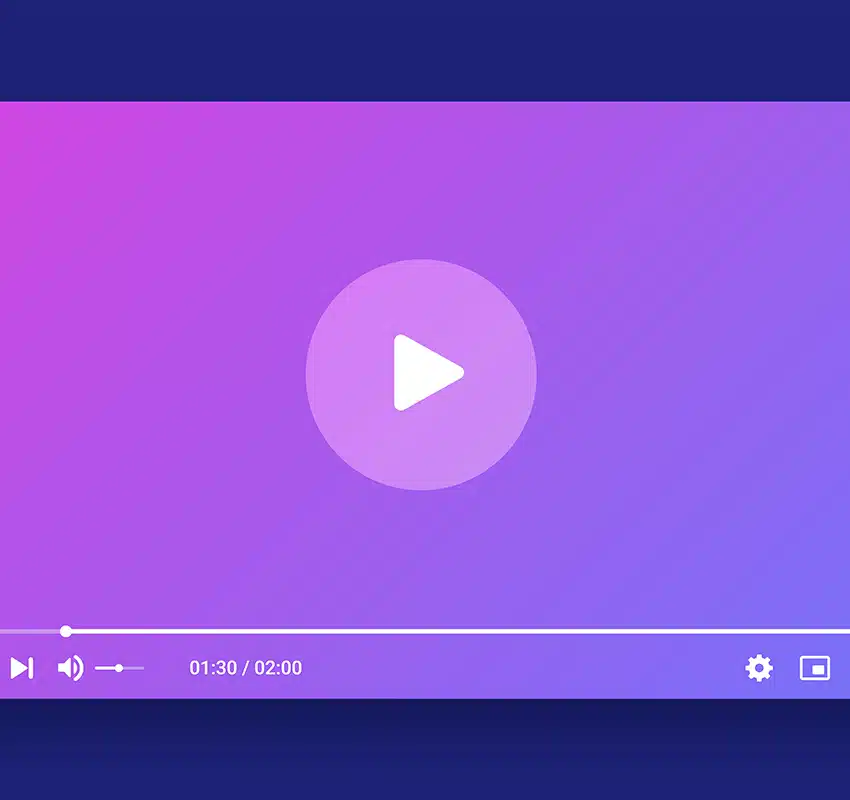What Is Video Header Bidding?
Video header bidding is a technology that allows publishers to auction their video ads to multiple demand sources simultaneously. This method maximizes revenue by increasing competition among advertisers. Unlike traditional methods, it enables real-time bidding, ensuring the highest bid wins. This article explores how video header bidding works, its benefits, and essential tips for implementing it.
Key Takeaways
- Video header bidding allows simultaneous auctions for ad space, maximizing revenue and enhancing competition among advertisers.
- Implementing video header bidding can involve either client-side or server-side approaches, each with distinct advantages in terms of speed, efficiency, and control over ad delivery.
- Key benefits of video header bidding include increased revenue, improved ad quality, and enhanced transparency in the advertising process.
Understanding Video Header Bidding
Header bidding for video content has transformed digital advertising by introducing real-time, simultaneous auctions, significantly increasing publishers’ earnings. This method replaces the sequential waterfall approach, encouraging fair pricing and quicker ad delivery by enabling multiple buyers to participate in auctions concurrently.
Since its inception around 2015, video header bidding has become a mainstay in digital ad sales due to its competitive nature. Unlike the traditional waterfall model, which restricts bidding to one buyer at a time, video header bidding increases competition, leading to higher potential revenue.
How Does Video Header Bidding Work?
Header bidding for video content can be conducted using either client-side or server-side technology. The auction’s location is the main distinction: Client-side bidding occurs within the viewer’s browser, while Server-side bidding takes place on a central server. Ensuring that the video player initializes along with the webpage load is crucial to delivering ads seamlessly.
Once a viewer begins video playback, the video player sends an ad request, initiating a bidding process facilitated by the header bidding platform. This platform connects with multiple demand partners to secure the highest bids, optimizing revenue by drawing on a variety of potential buyers.
Implementing Video Header Bidding
Implementing video header bidding can significantly boost ad revenue for publishers by fostering a more competitive bidding environment. This section offers a detailed guide on integrating video header bidding effectively, covering both client-side and server-side approaches to help publishers manage technical intricacies, maximize yield, and maintain a seamless viewing experience.
Client-Side Video Header Bidding
Client-side video header bidding takes place within the viewer’s browser. As the video player initializes, it sends bid requests to multiple demand partners simultaneously, creating a competitive environment that often leads to higher bid values. This method has several distinct advantages:
- Enhanced Competition: Requests are sent to multiple demand sources directly from the user’s browser, allowing advertisers to participate in real-time auctions and maximizing the chances of obtaining the highest bid.
- Customization and Control: Client-side bidding allows for more granular control over bids and ad placements, offering publishers better flexibility in targeting and display options.
However, this approach requires careful management to prevent issues with video playback quality. Publishers must ensure that bids load quickly to maintain smooth streaming, as delays can disrupt the user experience.
Server-Side Video Header Bidding
In server-side video header bidding, ad auctions occur on a centralized server rather than in the viewer’s browser. Here’s how this method optimizes the process:
- Reduced Latency: Server-side bidding reduces the load on the viewer’s browser, improving the user experience by minimizing buffering and delays.
- Scalability: This method supports a larger number of demand partners without burdening the viewer’s device, allowing for more bids to be processed simultaneously.
By aggregating bids from various demand partners, server-side video header bidding increases the likelihood of securing a winning bid, thus enhancing the overall revenue potential for publishers. Additionally, it allows for greater control over the publisher’s ad server, streamlining the delivery process and maximizing ad inventory efficiency. However, while this approach can improve ad delivery, it may introduce some transparency concerns, as fewer details about competing bids are accessible. Publishers must weigh these factors to determine the most suitable approach.
Key Technologies in Video Header Bidding
To successfully implement video header bidding, it is crucial to comprehend the essential technologies that play a role. These include header bidding wrappers that facilitate the process, video ad servers integral for management, and compatible video players that are necessary for execution—all of which underscore their significance in this advertising mechanism.
Header Bidding Wrapper
In video header bidding, the header bidding wrapper is crucial for orchestrating auctions smoothly. It sends bid requests concurrently to numerous demand partners, enhancing the efficiency and competitiveness of the bidding process.
Publishers have increasingly adopted three types of header bidding wrappers: open-source, proprietary, and managed wrappers. Each type offers unique benefits for efficiently managing multiple buyer connections within the header bidding framework.
Video Ad Server
The video ad server plays an integral role by creating ad tags and managing ad delivery, ensuring that video advertisements are served accurately. These servers often feature tracking capabilities that allow publishers to monitor performance, adjust their strategies, and fine-tune the bidding process.
To support video header bidding, ad servers must integrate smoothly with demand partners, allowing for seamless ad delivery across diverse video inventory. This coordination optimizes the auction process and helps maximize potential returns, enabling publishers to leverage their video ad inventory effectively. Publishers can enhance their overall revenue potential and audience engagement by ensuring that ad placements are optimized within the available inventory.
Video Players
Optimizing video players is essential for effective ad delivery and maintaining a quality user experience. Using video players that support a variety of ad formats ensures smooth integration without interrupting user engagement. Video header bidding requires careful consideration of compatible player options to accommodate diverse ad styles and formats.
Advantages of Video Header Bidding
Video header bidding offers significant advantages for publishers, including increased revenue, improved ad quality, and enhanced transparency. These benefits make it an invaluable strategy in digital advertising.
Increased Revenue
By fostering real-time competition among advertisers, video header bidding can significantly boost publishers’ ad revenue. For example, publishers can see CPMs rise from $8 to as much as $16 due to heightened demand. This process allows publishers to capitalize on increased bid prices, maximizing revenue.
Improved Ad Quality
Video header bidding ensures that the highest-quality, most relevant ads are shown by awarding slots to top bidders. This strategy not only enhances user experience but can also drive higher engagement, benefiting both publishers and advertisers.
Enhanced Transparency
Video header bidding provides publishers with insights into ad performance and the bidding process. This transparency enables more informed decisions, helping publishers refine their advertising strategies for even better results.
Challenges and Solutions in Video Header Bidding
While video header bidding offers numerous advantages, it also presents challenges such as technical complexity, increased latency, and data privacy concerns. This section addresses these issues and provides effective strategies for publishers to navigate these obstacles successfully.
Technical Complexity
Video header bidding poses greater challenges compared to traditional display ads due to the diverse range of video players and ad formats that need support. The complexity increases as publishers attempt to synchronize various technologies during setup.
Additionally, transparency concerns arise when advertisers have limited visibility into the auction mechanism. This lack of clarity can hinder their ability to detect favoritism or understand pricing decisions. Navigating these intricacies requires meticulous planning and thoughtful integration efforts.
Latency Issues
Latency can negatively affect user experience, leading to ads failing to play correctly. Particularly on the client side, incorporating multiple scripts and connections can slow down page loading speeds.
To mitigate these delays and ensure a seamless user experience, publishers should limit the number of demand partners and implement asynchronous loading strategies to enhance ad delivery efficiency.
Data Privacy Concerns
As privacy regulations continue to evolve, the advertising industry faces increasing pressure to balance revenue generation with the protection of consumer data. Video header bidding requires the sharing of user data among multiple demand sources, which can present privacy risks.
Publishers must prioritize compliance with privacy regulations and safeguard data confidentiality to uphold regulatory standards and maintain consumer trust in this complex environment.
Best Practices for Optimizing Video Header Bidding
To maximize performance and revenue from video header bidding, publishers should adhere to proven best practices, including selecting the right demand partners, setting appropriate floor prices, and monitoring key performance indicators.
Selecting Demand Partners
It is vital to assess the research and credibility of demand partners for video header bidding. Publishers can enhance bid and fill rates by continuously testing various configurations with different settings and partners.
Setting Floor Prices
Floor prices should be flexible to ensure competitiveness while maximizing revenue. They should adjust based on video content and viewer engagement levels.
Monitoring Performance Metrics
Employing advanced analytics tools to track critical metrics such as ad fill rates and CPMs is essential. Utilizing real-time monitoring tools helps identify and address performance challenges promptly, ensuring continuous improvement of video header bidding processes.
Future Trends in Video Header Bidding
Advancements in technology, including artificial intelligence and machine learning, are reshaping video header bidding. These innovations enhance bid optimization and ad relevance. Moreover, blockchain technology is emerging to ensure greater security and transparency in advertising transactions.
The integration of programmatic buying methods is set to revolutionize video header bidding, enabling instantaneous auctions while improving operational efficiency. Publishers are also exploring new ad formats, such as interactive shoppable ads, aimed at increasing viewer engagement and revenue generation.
Adaptive floor pricing strategies allow publishers to adjust their base prices in response to fluctuating demand and changing market conditions. Effectively leveraging these strategies requires stronger partnerships between publishers and advertisers, focused on developing optimal bidding approaches and enhancing overall industry productivity.
Summary
In conclusion, video header bidding is a powerful tool that offers several benefits, including increased revenue, improved ad quality, and greater transparency. Understanding its functions and effectively implementing it through client-side or server-side approaches enables publishers to skillfully manage its complexities and enhance their advertising strategies. While challenges such as technical complexity, latency, and data privacy concerns exist, adopting best practices and staying updated with new developments can help publishers fully leverage the potential of video header bidding. Engaging with this technology is crucial for revolutionizing ad sales processes and maintaining a competitive advantage in the ever-evolving online marketplace.











